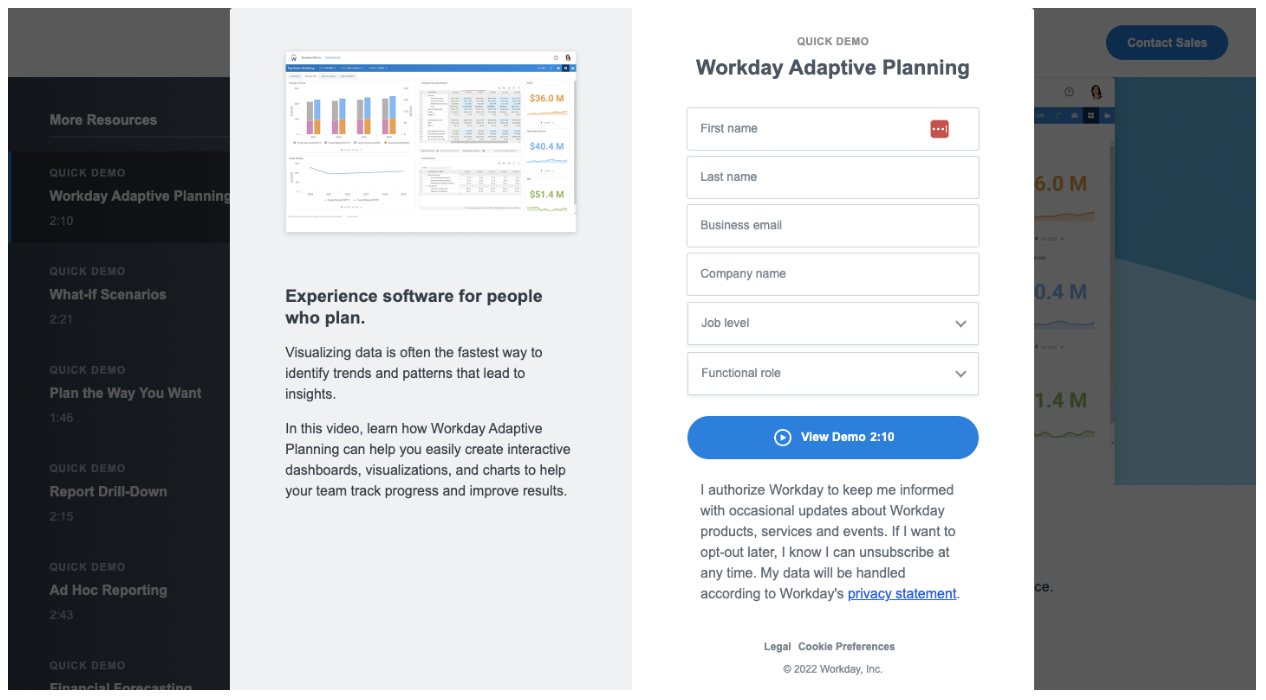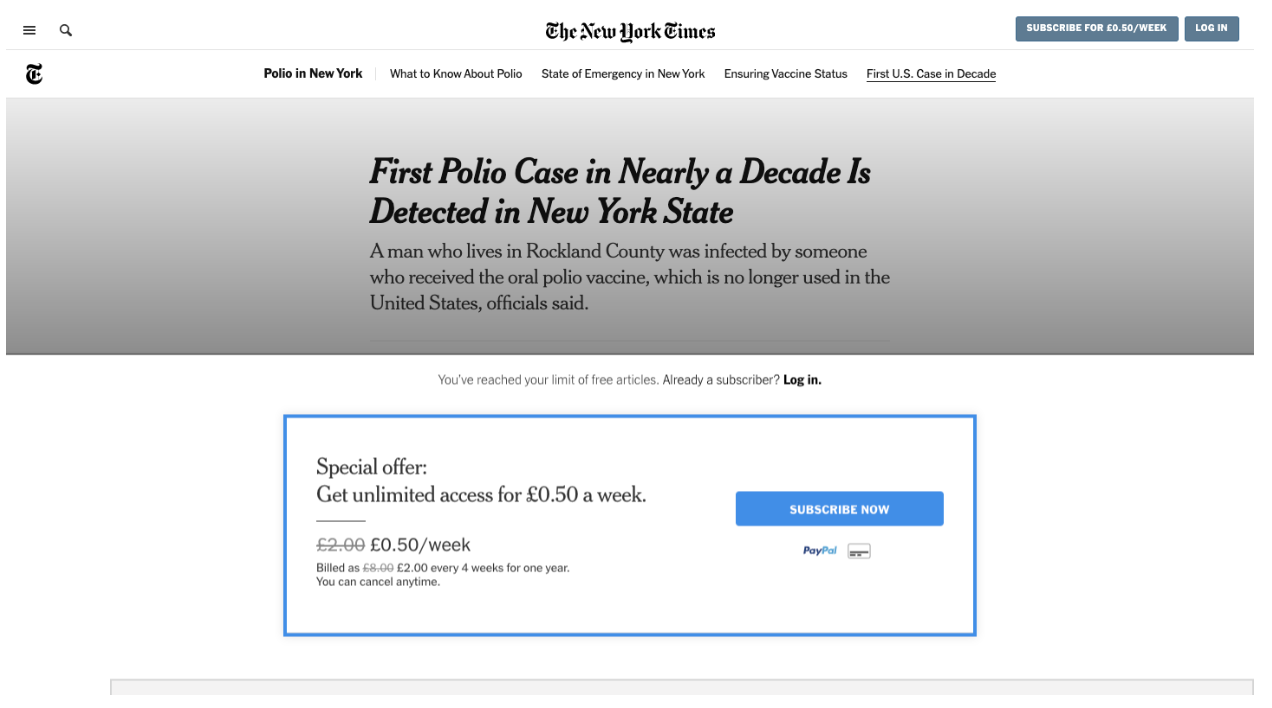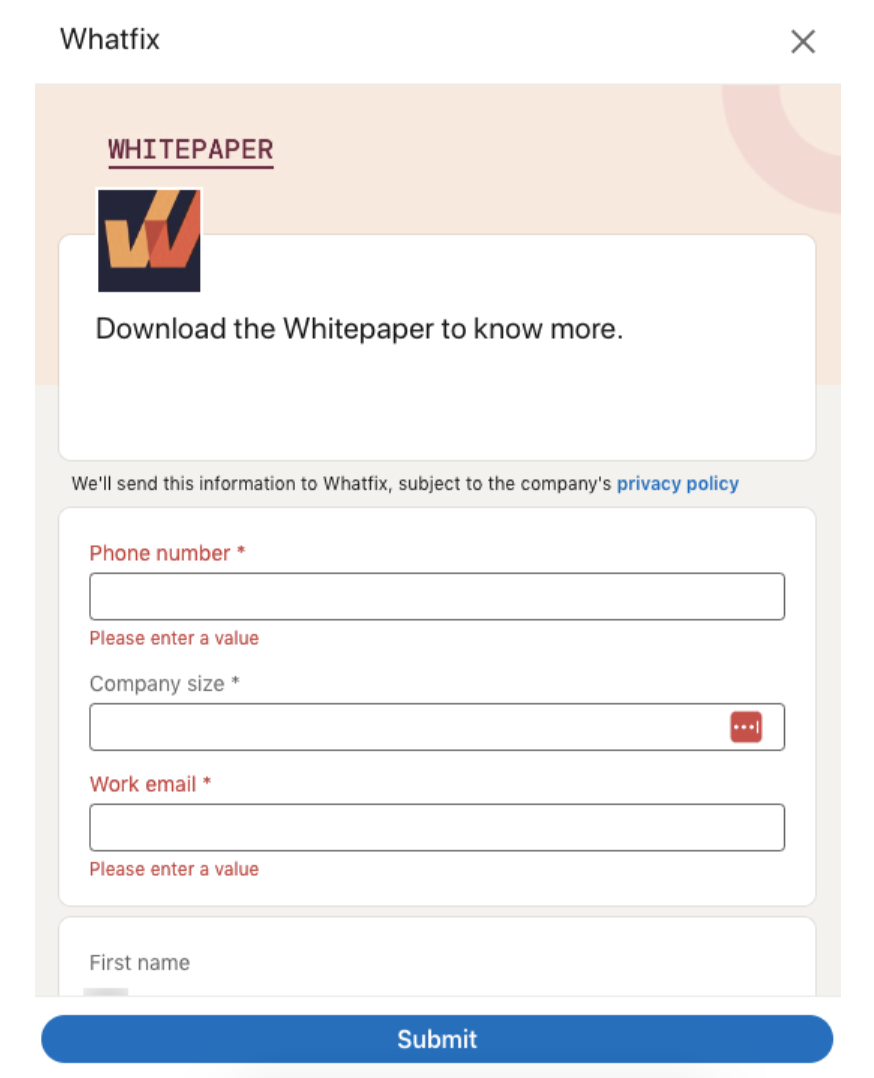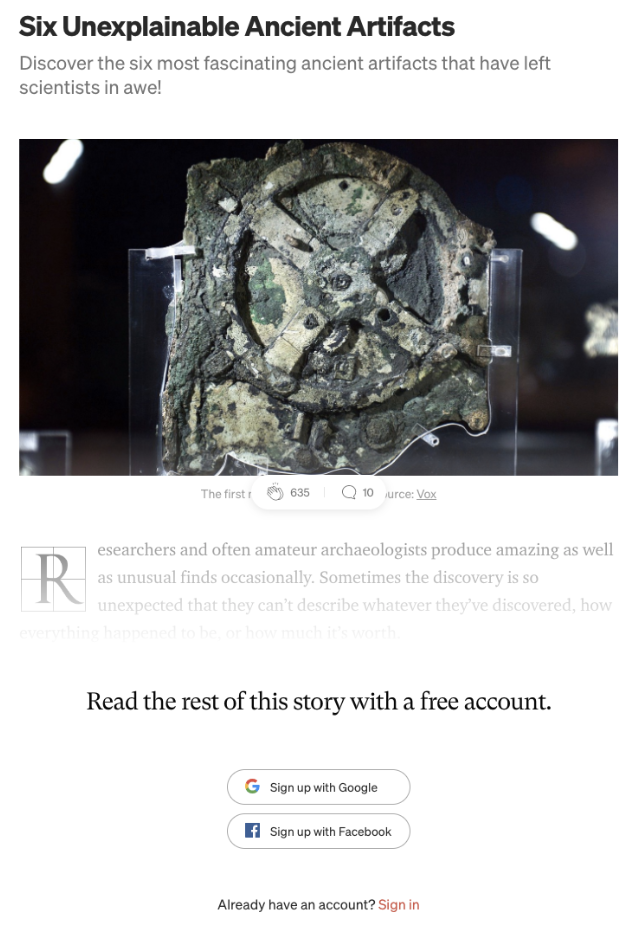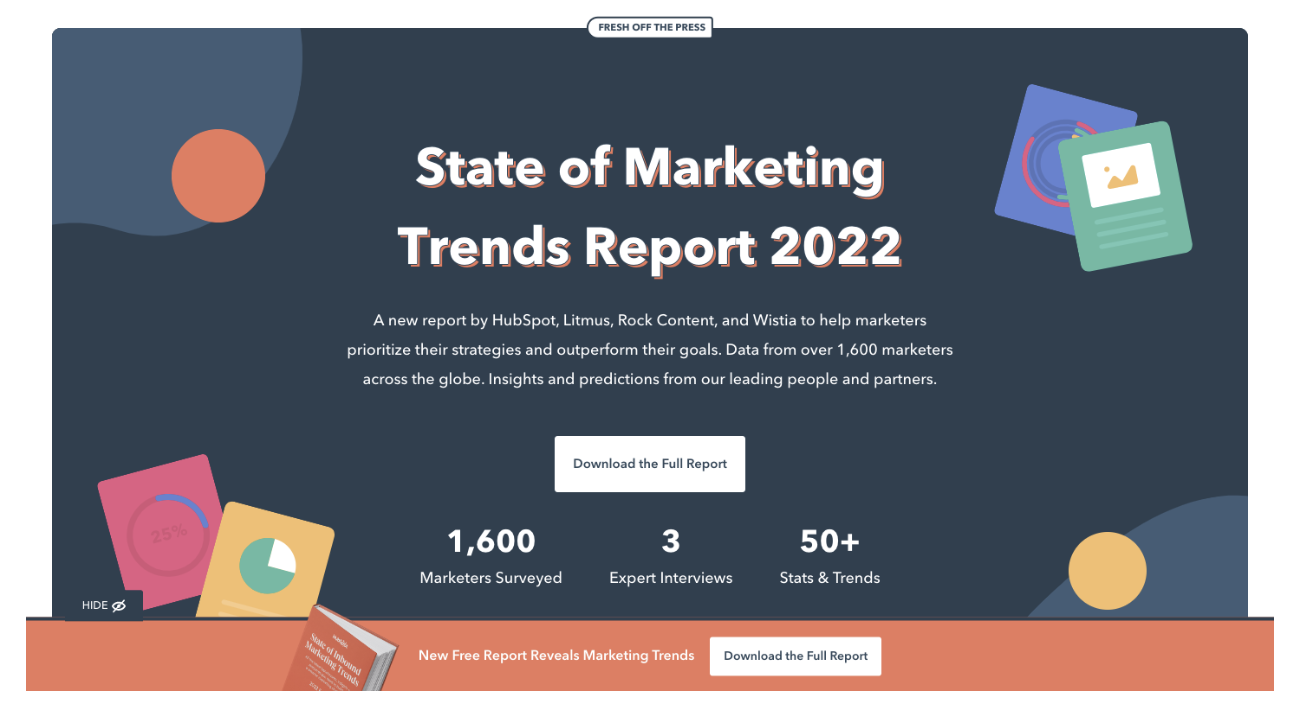No one does content marketing for the sake of it. Every campaign has a purpose.
For 36% of marketers, that purpose is to generate leads. Meanwhile, 27% say their main content marketing goal is to boost sales and revenue.
Both of those objectives can (potentially) be supported by creating gated content. In this article, we’re going to answer the following questions:
- What is gated content?
- How can you “gate” your content?
- What are the pros and cons of gated content?
What Is Gated Content?
Gated content is any type of content that lives on your website behind a data capture form.
Sometimes, the form will ask for nothing more than the user’s name and email address. On other occasions, it might demand a wealth of data, from the size of their company to their business goals.
As we’ll go on to explain, this information can be super helpful for creating segmented, personalized marketing campaigns.
“Gating” is often used in conjunction with long-form written content, like ebooks and whitepapers. But it can also be applied to graphics, videos, interactive guides, or anything else.
Business software company Workday even asks users to completed a gated content form to access its product demo video:
Gated Content vs Paywalling
As you likely know, lots of websites — particularly media organizations — use paywalls to limit access to their content. That process typically looks a bit like this example from The New York Times:
Publishers use paywalls as a means to monetize their content by prompting readers to sign up for a subscription. As such, paywalling isn’t the same as “classic” content gating, although the aims are pretty similar. Both ask the user for some sort of commitment before allowing them to access a piece of content.
From an SEO perspective, Google recommends publishers use a process called “flexible sampling” to manage their paywalls. There are two distinct “flavors” of flexible sampling:
- Metering: Allows users to access a set number of articles without requiring them to log in or subscribe. After the quote is reached, the paywall will appear.
- Lead-in: Automatically displays a chunk of each piece of content, but a paywall appears part-way through asking the user to log in or subscribe.
4 Methods for Gating Content
There are various ways to “gate” your content. Here, we’ll take a look at four common methods and discuss some key considerations around each.
1. Content-Blocking Gates
Your common content-blocking gate is the most frequently used form of content gating. It’s essentially a single form standing between the user and the content they want to access. It typically looks something like this:
With a content-blocking gate, no one can see what’s on the other side — not even Google’s search crawlers.
Unfortunately, that means any content you hide behind a blocking gate can’t be indexed, which means it has no SEO value.
2. Dynamically Gated Content
Dynamically gated content is popular with publishers who allow readers to access a certain number of articles before asking them to create an account or pay for a subscription.
Here’s an example from Medium:
The advantage to this approach is that search crawlers can see — and index — the content, which means it has a fighting chance of ranking on Google.
However, many marketers use gated content to generate top-of-the-funnel leads (i.e. people who’ve never visited your website before, and have likely never even heard of you).
If that’s your goal, dynamic content gating isn’t the best solution, because once your potential leads have accessed the content they were interested in, you might never see them again.
3. Let Google Access Content (But Gate It For Everyone Else)
It’s possible to add a script to your content that allows Google to access it, while gating it from regular users.
Perfect! Problem solved, right?
Sadly not. Google might consider this to be “cloaking” — that is, showing one URL or page of content to human users, while presenting search crawlers with something different.
This is a violation of Google’s Webmaster Guidelines. So if you get caught — which you probably will — your rankings could suffer.
4. Create a Landing Page for Gated Content
From a marketing perspective, arguably the best form of content gating is to create a dedicated landing page that houses:
- A lead capture form
- Some information about the content behind the form
HubSpot often uses this approach:
It’s not perfect, because there’s still a ton of non-indexable content with no SEO value hidden away on the other side of the form. But the landing page copy and images might appear in search, while also helping you persuade users that your content is worth downloading.
Should You Create Gated Content?
Okay, so we know what gated content is and how it works.
But will it be a valuable addition to your content strategy, helping you generate more leads and sales? Or will it just create an unnecessary barrier for your audience?
Let’s take a look at the biggest pros and cons of gating content:
Pros to Gated Content
Captures Valuable Lead Data
Wouldn’t it be fantastic if you could get the name and contact details of every person who reads your content? That way, you could reach out to them, ask what they thought, and see if they’d be a good fit for your product or service. That’s what gated content is all about.
Supports Your Segmentation Efforts
As an extension of the previous point, gating content allows you to build segmented marketing lists. By asking users a bunch of questions in return for your content, you can segment by:
- Budget
- Company size
- Marketing goal
- Industry
- Job role
And any number of other criteria.
This is important, because segmentation has a massive impact on marketing performance. For instance, Mailchimp found that segmented email campaigns deliver:
- 14% higher open rates
- 11% more unique opens
- 101% more clicks
Adds Perceived Value to Your Content
There’s also a potential psychological benefit to content gating. Hiding an ebook behind a lead capture form distinguishes it from your regular, ungated content. It looks more exclusive.
This isn’t just another blog post someone can find, click on, read and leave. It’s of such high quality, you simply can’t afford to give it away totally free.
Cons to Gated Content
Potentially Damages Your SEO
As we’ve already noted, most types of gated content have little or no SEO benefit, because Google’s crawlers can’t scuttle around the data capture form.
If you gate a piece of content rather than simply uploading it to your blog, you’re effectively reducing the amount of indexable information on your site, which hurts your search performance.
On the flip side, un-gating a content asset might improve your rankings by increasing the amount of indexed content on your site.
Adds Steps to Content Creation
We know that content production is an ongoing challenge for marketers with Salesforce reporting ineffective use of tools and technology as the top barrier to content production for marketers, while Optimizely shares that 40% of marketers struggle to meet demands for a high volume of content.
So if time, tools and resources are at a premium, do you really want to add a bunch of tasks to the content production process?
Gated content requires you to build forms, landing pages, autoresponders, and more. Plus, what’s the point of gating your content if you don’t have a plan for how to segment, target and market to your new audience?
If that’s going to slow down your content creation, it may not be worth the hassle.
Affects the User Experience
Imagine you’re searching for the perfect recipe for fettuccine alfredo.
You think you’ve found exactly what you’re looking for, but then BAM, you’re slapped in the face (metaphorically) with a data capture form demanding your name and email address.
But you haven’t seen the recipe yet, so how can you tell if it justifies handing over your personal details? There’s a good chance you’d bounce right back to the search engine results page and click another result instead.
That’s a real issue with gated content. Sure, you might generate some leads. But who’s to say those people wouldn’t have reached out to you anyway? Especially if they loved your content.
At the same time, you might have turned away lots of other potential leads who simply didn’t want to offer up their personal information.
Final Thoughts
As you can see, there are lots of considerations to gating content. Done well, it’s a highly effective way to generate leads. But there are downsides too, not least when it comes to SEO and the user experience.
For that reason, gating content tends to work best for mature organizations. With younger companies that are just starting out in marketing, it can be more beneficial to get as many eyes on your content as possible, rather than scaring people off with a bunch of forms.
Gated or ungated, high-quality content is difficult and time-consuming to produce. Get in touch with Content Conquered today to see how we can help you create better content, faster.

